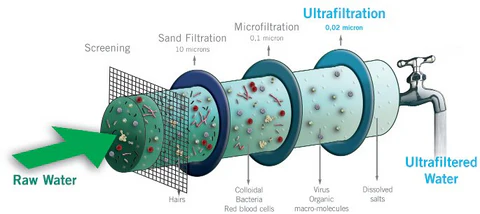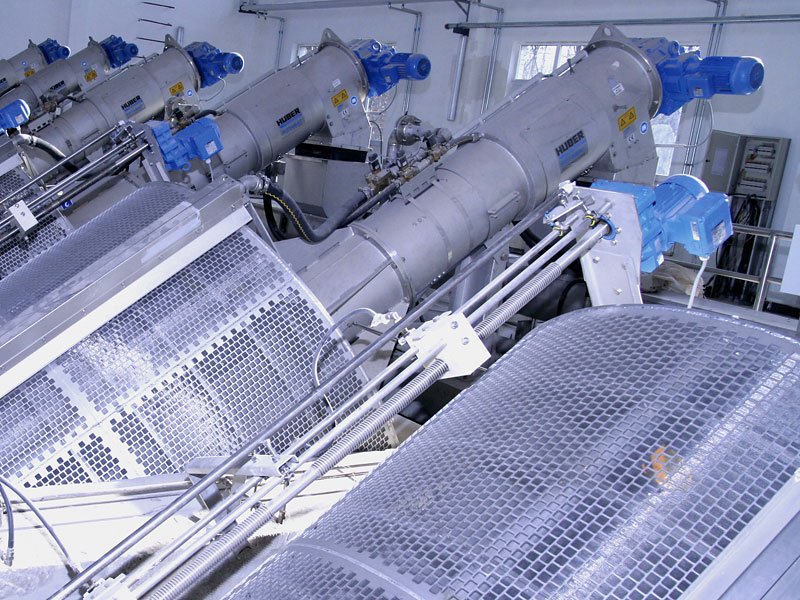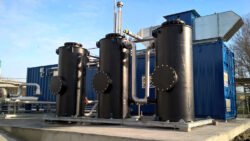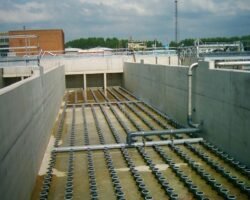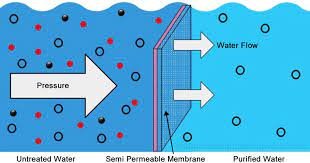Gear pumps are a crucial component in many industries, widely used for their ability to handle viscous fluids with precision. They operate by using rotating gears to move liquid efficiently through a system. The primary value of gear pumps lies in their efficiency and reliability in transferring fluids, making them indispensable in hydraulic systems and lubricating applications.
There are two main types of gear pumps: external and internal gear pumps. External gear pumps typically have two gears working in tandem to move fluid, while internal gear pumps feature one gear within another. Both types serve distinct purposes and are selected based on specific application needs. Their design allows for a consistent flow rate, which is crucial in maintaining the operations of machinery and processes.
The proper installation and maintenance of gear pumps ensure long-lasting performance and minimal downtime. Regular inspections help identify wear and potential issues, preserving the pump’s functionality and reducing the likelihood of system failures. Understanding the design and function of gear pumps can lead to improved system performance and greater operational success.
Key Takeaways
- Gear pumps efficiently transfer fluids.
- External and internal gear pumps have distinct designs.
- Proper maintenance ensures pump longevity.
Fundamentals of Gear Pumps
Gear pumps are a type of positive displacement pump used for transporting fluids by trapping a specific volume and then displacing it. Commonly found in various industries, they are valued for their efficiency and reliability.
Working Principle
Gear pumps operate using a simple mechanism of rotating gears. These pumps typically consist of two gears: a driving gear, which is powered, and a driven gear. As these gears rotate, they create suction at the pump inlet. Fluid flows into the cavities formed by the rotating gear teeth.
The liquid is then trapped and transported along the casing. The close fitting of the gears and casing minimizes leakage, ensuring controlled flow. When the gears mesh on the discharge side, the fluid is expelled.
This constant rotation produces a steady flow rate, which is a key characteristic of positive displacement gear pumps. This simple design also allows them to handle thick and viscous fluids, making them ideal for applications requiring precise flow control.
Types of Gear Pumps
Gear pumps come in several types, primarily divided into external and internal gear pumps. External gear pumps have two external gears that mesh to create the pumping effect. They are easy to maintain and are capable of handling high pressures.
Internal gear pumps feature one external and one internal gear, creating a pumping chamber through an internal motion. These pumps offer a smoother, more consistent flow and are often used in chemical processing, where delicate handling of fluids is required.
Each type serves different applications, with design variations tailored to handle different fluids, pressures, and environmental conditions. The choice between external or internal gear pumps depends on factors like the required flow rate and the nature of the fluid being pumped.
Design and Components
When designing gear pumps, careful consideration is needed for gear design, material selection, and drive mechanisms. These elements ensure durability and efficiency in applications like oil pumping and power steering.
Gear Design
In gear pumps, the gear design plays a crucial role. There are two main types: external and internal. External gears involve two or more gears with external teeth, often used in applications like stainless steel and cast iron gear pumps for their robust performance.
Internal gears have one gear with internal teeth and another with external teeth, which fit inside the first. This configuration is often found in compact designs, providing smooth operation.
The number of teeth and module size directly influence the pump’s capacity and efficiency. Proper gear design minimizes wear, reduces noise, and enhances the pump’s longevity, which is particularly vital for oil pump gears.
Material Selection
Choosing the right material for gear pumps is essential. Common materials include stainless steel and cast iron. Stainless steel is known for its corrosion resistance, making it ideal for applications involving corrosive fluids. Cast iron, on the other hand, is valued for its durability and cost-effectiveness.
The choice between these materials depends on the specific requirements of the application, such as the type of fluid and environmental conditions. For example, oil pump gears often require materials that can withstand high temperatures and pressures.
Material selection affects the pump’s durability and performance, so it must match the application’s demands for longevity and efficiency.
Drive Mechanisms
Drive mechanisms in gear pumps are crucial for transferring motion to the gears. Typically, these pumps are powered by electric motors or engines, which couple with the pump shaft to provide the necessary rotation. In a gear-driven power steering pump, the drive mechanism must accommodate varying speeds and pressures.
Additionally, configurations like the coyote oil pump gear require precise alignment and engagement to function effectively. Proper drive mechanism design ensures consistent fluid flow and pressure control, which is important for maintaining pump efficiency and reliability in different industrial applications.
Applications
Gear pumps are versatile devices used across various industries to transport fluids. Known for their reliability and precision, they are key in processes involving heavy-duty and hazardous liquids. Their adaptability allows them to handle different materials and work in numerous systems, providing essential support for industrial and hydraulic applications.
Industrial Uses
In industrial settings, gear pumps play a crucial role in fluid transport in the petroleum industry. They are used to move both crude and refined products. Viking gear pumps are especially popular because they handle viscous liquids effectively and are durable enough for heavy-duty tasks.
They are also essential in chemical processing for handling thick fluids such as oils and resins without issue, ensuring a consistent flow rate. Their precise operation enables the efficient management of production lines, contributing to improved processing and reduced waste. This consistency and reliability make them a standard choice for various industrial applications.
Hazardous Fluid Handling
Gear pumps excel in handling hazardous fluids due to their design, which minimizes leakage. Magnetic drive gear pumps are often used in such situations because they eliminate the need for seals, reducing the chance of leaks. This feature is crucial when dealing with dangerous or corrosive materials, ensuring safe operation and minimal risk to personnel and the environment.
These pumps can easily manage the complexities of dealing with toxic or reactive chemicals. Heavy duty gear pumps ensure that even the most challenging fluids are handled with care, maintaining safety and efficiency throughout hazardous fluid transportation. Their robust design provides peace of mind in sensitive operations.
Hydraulics Systems
In hydraulic systems, hydraulic gear pumps are integral in generating flow necessary for power transmission. They transform mechanical energy into hydraulic energy, enabling machines to perform heavy lifting and other tasks with precision. This precise operation is critical in construction, agricultural machinery, and automotive applications.
These pumps offer control over oil flow, crucial for the efficiency and effectiveness of hydraulic systems. Hydro gear pumps are known for their compact design, making them ideal for systems where space is limited, yet power is paramount. Their effectiveness in diverse applications highlights their versatility in hydraulic systems across industries.
Installation and Maintenance
Proper installation and maintenance of gear pumps ensure consistency and longevity. Following guidelines for installation, addressing common issues, and implementing best practices for maintenance will optimize performance.
Installation Guidelines
When installing a gear pump with a motor, it’s vital to ensure proper alignment between the pump and motor shafts. Misalignment can lead to excessive wear and reduce efficiency. Secure mounting is essential to prevent vibration and noise during operation.
For a gear pump hydraulic system, using the correct size and type of hoses and fittings is critical to minimize the risk of leaks. Check the manufacturer’s specifications to select the appropriate components. Use a torque wrench to tighten bolts to the recommended specifications to avoid damage.
Troubleshooting Common Issues
Common issues with gear pumps include leaks, noise, and inadequate pressure. Hydro gear pump troubleshooting often starts with checking for blockages in the suction line and ensuring all connections are secure. Coyote oil pump gear failure may result from worn gears, which require immediate replacement.
If performance issues persist, consider using a hydro gear pump rebuild kit. This option can restore functionality by replacing worn components. Inspect seals and gaskets regularly and replace them if damaged to prevent leaks and maintain proper pressure levels.
Maintenance Best Practices
Regular maintenance can significantly prolong the life of a gear pump. Begin with scheduling periodic inspections for wear on gears and seals. Keeping a detailed log of maintenance activities helps track service intervals and identify recurring issues.
Clean the pump exterior and inspect the oil level and quality regularly, as contaminated oil can lead to malfunctions. In addition, ensure that venting and filtration systems are in good condition to prevent debris from entering the pump.
Implementing these best practices will reduce the likelihood of breakdowns and enhance the efficiency of the equipment. Consider professional servicing if more complex issues arise or if the system requires a hydro gear pump rebuild.
Selection Criteria
Choosing the right gear pump involves analyzing specific performance needs, liquid properties, and ensuring compatibility and durability. It’s crucial to select a pump that aligns with the intended use and conditions to achieve optimal performance.
By Performance Requirements
Performance specifications are fundamental when selecting gear pumps. Consider pressure capabilities and flow rates to suit the application. A high-pressure gear pump might be essential for demanding tasks, while low-pressure applications could utilize a basic pump setup.
It’s also important to evaluate the pump’s efficiency. Factors like vane pump vs gear pump comparison can reveal which offers superior energy efficiency for the intended use. Analyzing throughput and potential for pressure fluctuations ensures consistent performance under expected operational conditions.
Based on Liquid Properties
The nature of the liquid being pumped heavily influences gear pump selection. Different liquids require unique handling capabilities. For instance, thin liquids might benefit from a thin liquid gear pump, while viscous substances could require specialized designs.
When working with food-grade substances, a food grade gear pump ensures compliance with hygiene standards and prevents contamination. Additionally, high temperature gear pumps handle hot liquids without compromising material integrity. Understanding these properties guarantees efficient and safe operation.
Compatibility and Durability
Ensuring the compatibility of materials in a gear pump with the liquid helps prevent wear and corrosion. Oil gear pumps are crafted from materials resistant to the degrading effects of oils. An oil gear pump often includes seals and gaskets designed to endure oil exposure.
For applications anticipating frequent or heavy use, durability is key. A helical gear pump can provide smoother operation and less noise, extending the pump’s lifespan. Regular maintenance with a gear lube pump helps minimize wear, increasing durability and reliability over time.
Operational Insights
Gear pumps play a crucial role in various applications, notably in maintaining efficiency and managing noise and vibration. Understanding how these pumps operate can enhance performance and reliability.
Efficiency Factors
Efficiency in gear pumps, such as hydro gear pumps, is influenced by several factors. The design and precision of gears are paramount; accurate gear alignment and smooth surfaces reduce internal friction. Internal gear hydraulic pumps are known for relatively high efficiency due to their close-fitting components that minimize leakage.
Heat generation also impacts efficiency. Ensuring proper cooling systems can prevent overheating, which often leads to energy loss. Additionally, maintaining the pump’s seals and inspecting for wear can help sustain optimal performance. Selecting the right lubricant also supports friction reduction, prolonging the pump’s lifespan. Regular maintenance checks are critical to detect any inefficiencies early on.
Noise and Vibration
Noise and vibration are common concerns in pump operations, particularly with quiet gear pumps. These disturbances can result from misaligned gears or poor installation. Proper alignment and installation are crucial to lessening these effects.
Using materials that dampen sound can make a significant difference. Rubber bushings or mounts can absorb vibrations, reducing noise transmission. The drive system also plays a role—hydrostatic systems, like those in hydro gear hydro pumps, can offer quieter operations. Regularly checking for loose components can also prevent noises before they develop into larger issues. Employing noise reduction techniques not only improves user comfort but also extends the pump’s service life.
Flow Control and Regulation
Effective flow control is vital for gear pumps. Using a la gear regulator pump allows for precise adjustments to the output flow, which is essential in applications requiring varying flow rates. These regulators help maintain consistent performance under different operating conditions.
Flow control can be managed through variable speed drives, which adjust the pump speed to match the system demands. Valves and sensors provide feedback to regulate flow dynamically. Monitoring systems are beneficial to track and adjust flow rates in real-time, ensuring smooth operation. Proper flow regulation not only enhances performance but also conserves energy, reducing operating costs over time.
Safety and Compliance
Gear pumps play a vital role in various industries. Ensuring they meet safety standards and environmental regulations is essential to prevent accidents and minimize ecological impact.
Safety Standards
Gear pumps must adhere to strict safety standards. These guidelines help prevent workplace accidents and ensure reliable performance. Gear pump safety regulations often require routine inspections and maintenance to detect and address potential issues.
One key focus is the prevention of leaks, which can lead to hazardous situations. Using high-quality seals and regularly checking connections reduces the risk of leaks.
In industries such as chemical processing, the approval of safety certifications ensures that gear pumps withstand demanding environments. Certifications may include compliance with standards like ISO 9001 for quality management. Regular training for operators is also crucial in maintaining safety in operations.
Environmental Compliance
Eco-friendly gear pumps are becoming more important due to increased emphasis on environmental sustainability. These pumps are designed to minimize emissions and energy consumption, reducing their ecological footprint.
Compliance with environmental regulations is critical. Manufacturers often pursue certifications that verify their products meet standards for reduced environmental impact. This can include adherence to regulations like the EU’s RoHS, which restricts hazardous substances.
Additionally, sustainable practices such as recycling used components and selecting materials with minimal environmental harm are encouraged. Companies choosing eco-friendly gear pumps can contribute to overall sustainability goals while maintaining efficiency and reliability in their operations.
Advancements and Trends
Gear pumps are continually evolving with new materials and designs. Recent developments focus on enhancing efficiency and durability, while material advancements aim to improve performance and lifespan.
Recent Developments
In recent years, gear pump innovations have targeted efficiency and versatility. The use of bi-wing rotors in rotary gear pumps has become popular due to reduced shear and improved handling of delicate substances. These cutting-edge designs allow pumps to handle solids and operate with minimal rotor-to-rotor contact.
This trend signifies a move towards greater efficiency and smoother operation. Many developers focus on integrating smart technology, enabling pumps to notify users of maintenance needs or efficiency improvements. Predictive maintenance and Internet of Things (IoT) connections are becoming more common.
Advancements in Materials
Innovative gear pump materials play a crucial role in enhancing performance. Sturdy composites and lightweight metals have been introduced to increase pump efficiency and durability. Advances in material science have led to the creation of components that resist wear and corrosion more effectively, thus extending the working life of pumps.
These materials also help in reducing the overall weight of the pump, making them more energy-efficient. By lowering energy consumption and boosting effectiveness, these advancements set a promising trajectory for the future of gear pumps, ensuring they remain competitive in an ever-evolving technological landscape.
Manufacturers and Brands
Gear pumps are essential components in various industries, and choosing the right manufacturer or brand can greatly impact performance and reliability. This section explores some of the top global suppliers and compares well-known brands in the market.
Global Suppliers
Several manufacturers dominate the gear pump market with innovative technologies and robust performance. Houston Pump and Gear is notable for their extensive range of gear pumps catering to numerous industries. They are renowned for their specialization in custom solutions.
Parker Gear Pump is another leading supplier, known for its hydraulic gear pumps that provide reliable and efficient fluid power solutions. Parker’s products are used worldwide, emphasizing precision and durability.
Top gear pump manufacturers also include LA Gear Pumps, which differentiates themselves with cutting-edge designs. They are recognized for their advanced manufacturing techniques that result in high-quality products.
Brand Comparisons
When comparing gear pump brands, factors such as efficiency, durability, and cost come into play. Parker Gear Pump is often praised for its high-performance standards, offering reliability in demanding environments. It’s a preferred choice for many industrial applications.
Houston Pump and Gear, on the other hand, stands out for its ability to customize gear pumps according to specific requirements. Users appreciate their flexibility and commitment to meeting unique customer needs.
Meanwhile, LA Gear Pumps provides competitive pricing without compromising on quality. This brand appeals to businesses needing well-performing gear pumps on a budget. Their focus on technological advancements adds value and enhances product lifespan.
Frequently Asked Questions
Gear pumps are important components in various industries for transferring fluids. They are appreciated for their reliability and efficiency. This section addresses common questions about gear pumps, highlighting their differences, advantages, and considerations for selection.
How do internal gear pumps differ from external gear pumps?
Internal gear pumps feature a gear within a gear design, leading to smoother operation. They handle high-viscosity liquids and provide consistent flow. External gear pumps, on the other hand, use two side-by-side gears and are better for high-speed and high-pressure applications. Their design is simpler, making them generally more economical.
What are the primary advantages and disadvantages of using a gear pump?
Gear pumps are valued for their steady and pulse-free flow, making them suitable for precise applications. They manage a wide range of viscosities and are compact in design. One limitation is their sensitivity to solids, which can cause wear and damage. They may also lack the ability to self-prime like some other pump types.
Can you explain the working principle of gear pumps?
Gear pumps operate by meshing gears that trap fluid and force it through the pump. As the gears rotate, fluid is drawn into the cavities and then pushed out on the discharge side. This simple yet effective mechanism enables consistent flow rates, which is why gear pumps are often chosen for applications requiring precise fluid control.
What should be considered when selecting a gear pump for a hydraulic system?
Key factors in selecting a gear pump include fluid viscosity, temperature, and system pressure requirements. Compatibility with the fluid type is crucial to avoid material degradation. Additionally, it’s important to consider the flow rate and efficiency needed for the specific application to ensure optimal performance.
How does a gear pump’s performance compare to that of a centrifugal pump?
Gear pumps are ideal for low-flow, high-pressure applications, offering precise flow control. In contrast, centrifugal pumps excel in high-flow, low-pressure scenarios. Gear pumps typically handle viscous fluids better than centrifugal pumps, which can struggle with higher viscosity due to their reliance on centrifugal force.
Who are some of the well-known manufacturers of gear pumps?
Notable manufacturers of gear pumps include companies like Viking Pump and Bosch Rexroth. These manufacturers are recognized for producing reliable and high-quality gear pumps for various industrial applications. They offer a range of models suited to different needs, ensuring customers can find the right pump for their system.
The post Gear Pumps: Essential Components and Applications Explained appeared first on Water & Wastewater.
source
https://www.waterandwastewater.com/gear-pumps-2/
